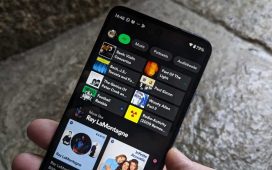A lot of noise has been made recently regarding the upcoming launch of Google’s cloud gaming service, Stadia. Beyond the inevitable hype that would build up around Google’s entry into the gaming sphere, there has been a recent, equally inevitable, backlash against it among consumers.
Following a Reddit AMA, it has become clear that Stadia’s launch on November 19th will be somewhat bare-bones, lacking a host of key features. For instance, existing Chromecast Ultra devices won’t be compatible with the Stadia from launch until they receive an (undated) update. Though the Chromecast Ultra included in the launch bundle will work.
Additionally, features such as family sharing, buddy pass, achievements and 4K/HDR gameplay on PCs are missing at launch, with only vague ideas of when they will appear on the system, with some penned for just “2020.”
This follows the announcement of Stadia’s somewhat underwhelming launch titles – a list of 22 mostly high profile, but older games, including Destiny 2 and Red Dead Redemption 2, with remarkably little for early adopters to actually play on the service – A reaction Google appears to be sensitive to, having added an additional 10 games at the last minute to its initial lineup of 12.
Still, even this expanded launch library pales in comparison to the competition. Microsoft has announced that their upcoming streaming service Project xCloud will host over 50 titles in its preview alone – including a host of their Xbox exclusive titles, such as Sea of Thieves and Crackdown 3.
However, while Google’s threadbare launch certainly isn’t ideal – it’s hardly the disaster many have been painting it as on social media. It’s important to remember that Google isn’t undergoing a standard hardware launch, but instead proving a concept. Stadia doesn’t need to hit the ground running with consumers, it simply needs to prove that video game streaming has a future in the industry: The pressure isn’t to have an expansive game library, or even to be feature-complete right now.
Instead, it simply needs to demonstrate that the Stadia works as advertised, and the rest can come later. If Stadia proves to be a success, and expands its library of games and features over the coming months and years, nobody is going to look back and remember its threadbare launch.
STADIA HANDS ON
So to test this, MCV/DEVELOP had a hands-on experience with the Stadia in Google’s London headquarters.
 The first thing we notice is the quality of the Stadia’s official controller. Now, while the controller isn’t required to play – we could be using an old wired Xbox 360 controller for all it mattered – the care and investment Google has made with the pad is telling. It feels expensive – holding a Dualshock 4 feels cheap and plasticy by comparison. While people may accuse Google of rushing to launch, they certainly can’t argue that they haven’t significantly invested in Stadia – A hopeful sign for those worried about the longevity of the project. More importantly, however, it feels good to play.
The first thing we notice is the quality of the Stadia’s official controller. Now, while the controller isn’t required to play – we could be using an old wired Xbox 360 controller for all it mattered – the care and investment Google has made with the pad is telling. It feels expensive – holding a Dualshock 4 feels cheap and plasticy by comparison. While people may accuse Google of rushing to launch, they certainly can’t argue that they haven’t significantly invested in Stadia – A hopeful sign for those worried about the longevity of the project. More importantly, however, it feels good to play.
It feels remarkably responsive, actually. We try out the most resource-intensive games available to us (not all of the then-12 launch titles were available during the session), and the Stadia holds up remarkably well. We play a few rounds of Mortal Kombat 11 with no noticeable lag or dip in visual quality. Destiny 2 does look a little rougher if you really stop and pay attention, but it plays smoothly enough and any visual downgrade is quickly forgotten. Hardcore, frame-counting fighting game fans might find the Stadia lacking, but it was more than smooth enough for a more casual experience.
Jumping between screens also feels seamless. We take Destiny 2 from the TV, to a laptop and finally over to a Google Pixel phone, all without any significant delay – just a brief pause as we connect to the server. What impresses us most is that, provided we don’t exit out of the game entirely, we pick right back up where we were – without the need to save or load game states. It reminds of us Nintendo Switch’s sleep mode, just a button press and we’re exactly where we left off, so long as the game stays open.
 We also have the opportunity to explore the Stadia’s storefront, which is… a little less than seamlessly integrated. We’re unable to actually buy any games but we’re assured that the process is instantaneous, once a game is purchased it will be instantly accessible from your library.
We also have the opportunity to explore the Stadia’s storefront, which is… a little less than seamlessly integrated. We’re unable to actually buy any games but we’re assured that the process is instantaneous, once a game is purchased it will be instantly accessible from your library.
One slight niggle is the store itself, for a few reasons. The first is that, at launch, the store is only available via the app – there’s currently no option to buy games when on the Chromecast or via PC. It’s certainly a small complaint – the store is planned to come to PC, and most people will have their phone on them while playing anyway, but it’s still a hiccup in what is otherwise a fully integrated experience.
The other reason is that the store we experienced was positively barren – a basic storefront that separates the free games via Stadia’s subscription service (currently just Destiny 2), and a second category that shows the available games one at a time in a basic list, reminding us of a cut-down version of the Google Play store.
 Loading up a specific title shows the game’s available DLC below, but outside of that there’s little marketing to, or prodding of, the user at the moment, and no featured games whatsoever, excluding the titles available via subscription. It all feels more like a preview of a commercial service than the finished thing.
Loading up a specific title shows the game’s available DLC below, but outside of that there’s little marketing to, or prodding of, the user at the moment, and no featured games whatsoever, excluding the titles available via subscription. It all feels more like a preview of a commercial service than the finished thing.
This is likely thanks to the Stadia’s limited library right now (the Switch’s eShop was similarly basic on release), but it certainly pales in comparison to the Xbox’s integration of its store with the opening dashboard, or the PSN store with its featured titles and deals. We expect this will (or should) be expanded as more games come to the Stadia, but it isn’t a terrific start.
Despite these niggles, the technology works, and works well. Though here’s where we come to the elephant in the room – it works in a controlled setting in Google’s London HQ. The connection we used was 35mbps, which is what Google recommends for streaming at 4k 60fps HDR. While we’re told that the connection was shared with the rest of the Google office, you’d obviously expect Google to have a stable and reliable internet connection.
How it performs out in the wild on a home internet setup is a different matter entirely, and one we can’t yet answer. Streaming 4k gaming is going to be a significantly bigger strain on a connection than streaming an album on Spotify.
According to a survey by Broadband Now, 17% of those asked said they had a data cap, with a further 21% saying they were unsure of if they had one. That’s potentially a significant percentage of the audience who might simply be unable to experience the Stadia – and that’s before we get to people who have unreliable or slow internet in their areas.
Now that’s something of a political hot potato at present, and if politicians feel able to make grand promises over broadband, the one thing we can be pretty sure of is that nothing will change anytime soon.
COMPETITION
Google has confirmed they have plans for crossplay with the Stadia. While that is certainly good business sense as the industry as a whole has become more open to allowing gamers to play together regardless of their system, it remains to be seen if the big established players will let Stadia into their newly-founded club.
Another unknowable factor is bigger still. Will the proposed pricing model work, either for current gamers or the new ones that the service, and others like it, are so very keen to attract? It’s easy to look to the domination of Spotify and Netflix, and see game streaming as an inevitability. But Stadia isn’t either of those things, not quite. It certainly matches the convenience of similar platforms, but its pricing is entirely different.
Stadia’s monthly subscription is better compared to PS Gold or Xbox Live, not to existing media streaming services. It’s an optional subscription that provides some free games, not unfettered access to its whole library. Though at £9 a month, casual consumers might expect a content offering on a par with Netflix or Spotify, and managing expectations is very much the key with these things.
For now games are similar prices as on any other digital storefront. In theory, with no hardware to buy, that makes them better value than on any other store, but will consumers see it that way? Will they be concerned by the longevity of the service? Or confused by the many ways to access it?
There are just too many questions that can’t be answered in advance – We won’t know these things until the Stadia is out in the wild. Google has proven to us that the Stadia can work, and work well. It remains to be seen if game streaming will prove popular among consumers – And even if it is, if Google can face off rival Microsoft in this arena.
On paper, looking at the two services, Microsoft certainly looks to have the upper hand today. An established gaming community, an arguably comparable engineering and network, a wide range of content and relationships with content makers, and a subscription service up-and-running – read our recent xCloud interview for more.
However, Google has audience reach beyond anything Microsoft can dream of. It owns search and still dominates video in the gaming space.
If it can utilise these to get casual gamers clicking through directly from YouTube to playing a game demo then that could provide a huge competitive advantage.
CONCLUSION
It’s fair to say that Google hasn’t exactly had the best of starts with the Stadia. Ever since the announcement of the initial lineup of games, and the subsequent revelations that the system will launch without some key features, there are many online who seem to want Stadia to fail, but then aren’t there always.
With Microsoft’s existing legacy in the industry, and the xCloud’s launch library doubling that of the Stadia’s, Google has certainly lost the initial fight for hearts and minds. But setting up a streaming service is a marathon, not a sprint. If Google can stick it out and expand upon its unquestionably impressive hardware, there’s no reason Stadia can’t turn its fortunes around.












